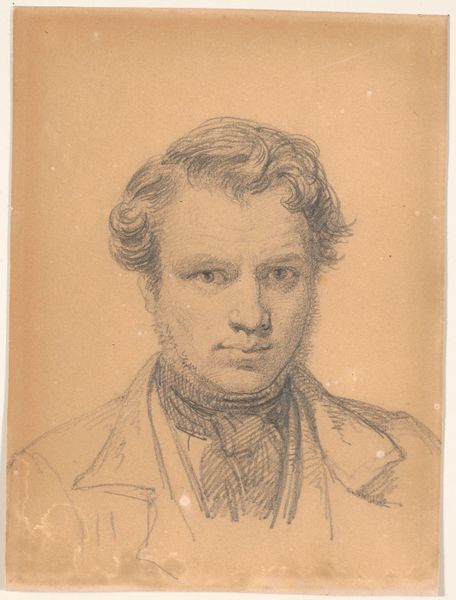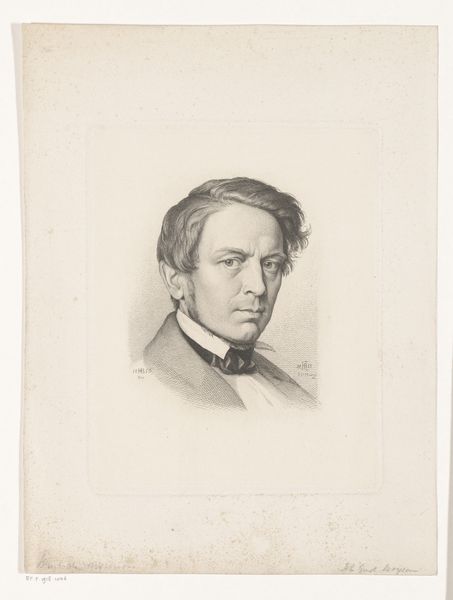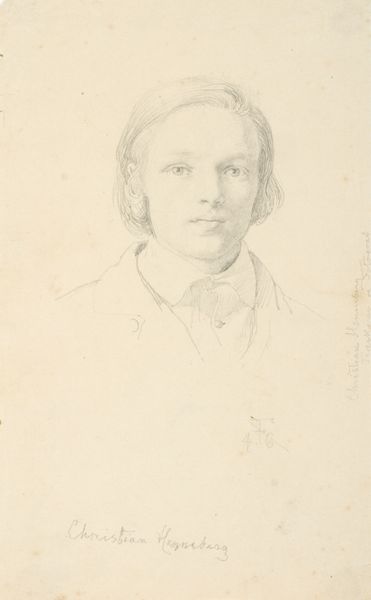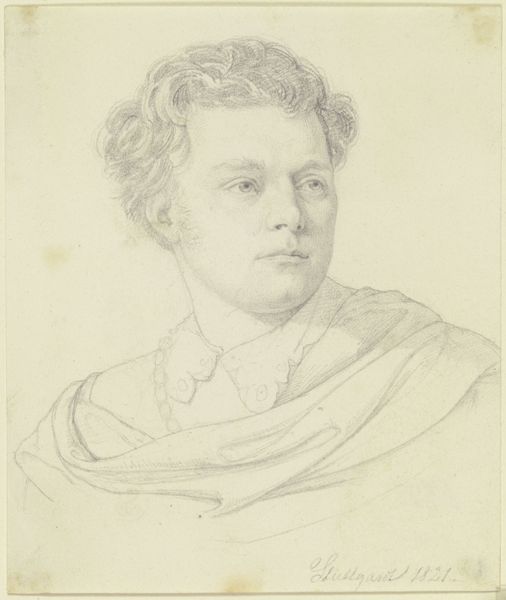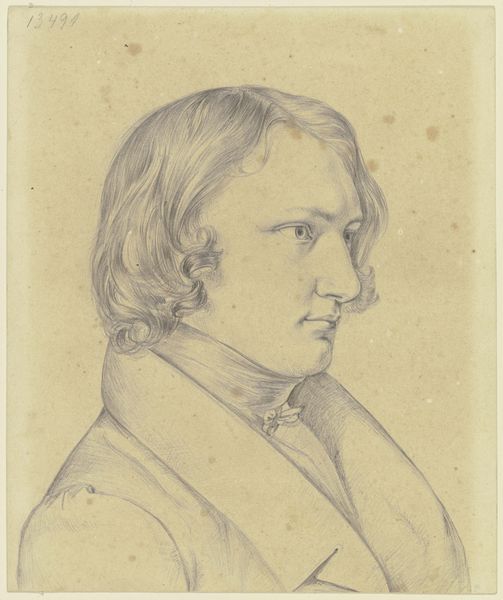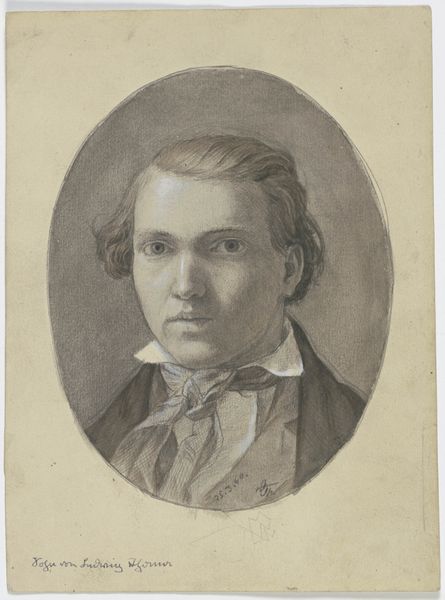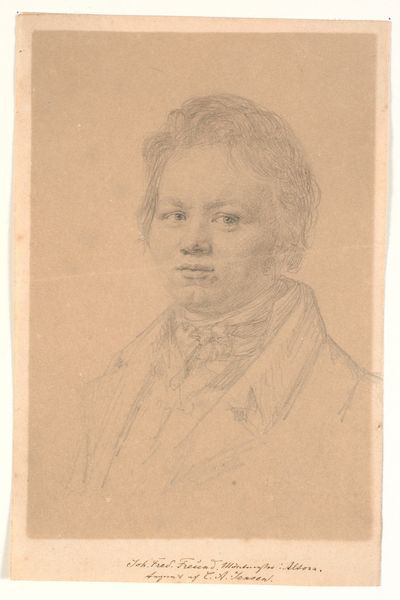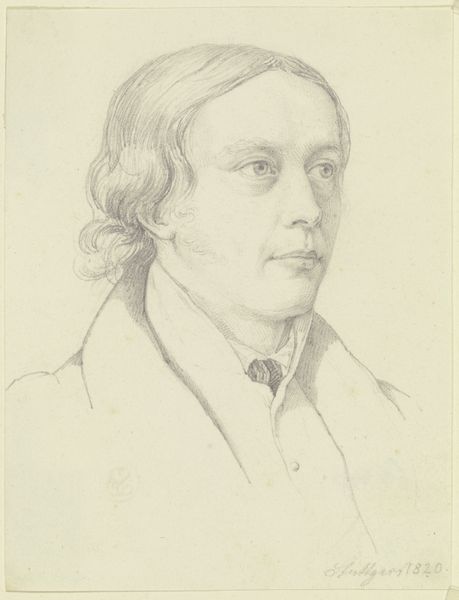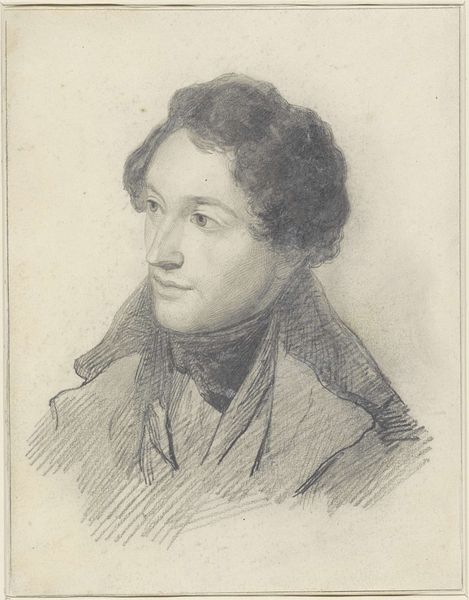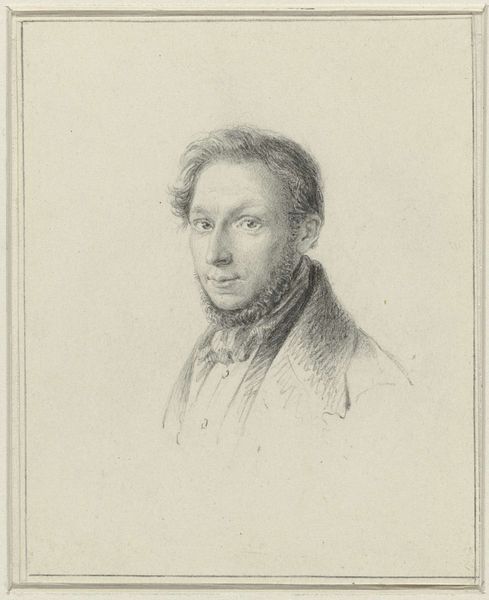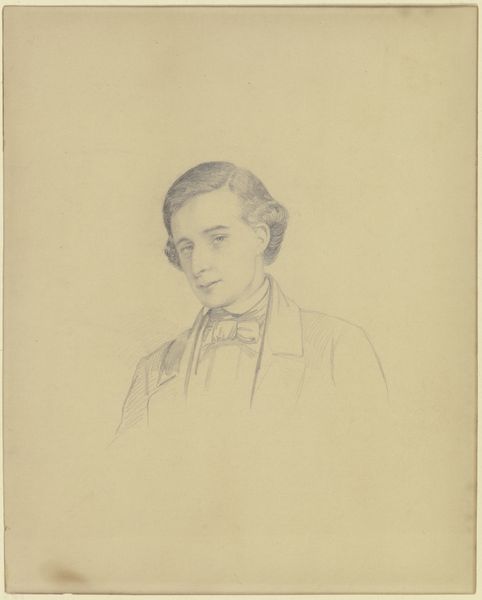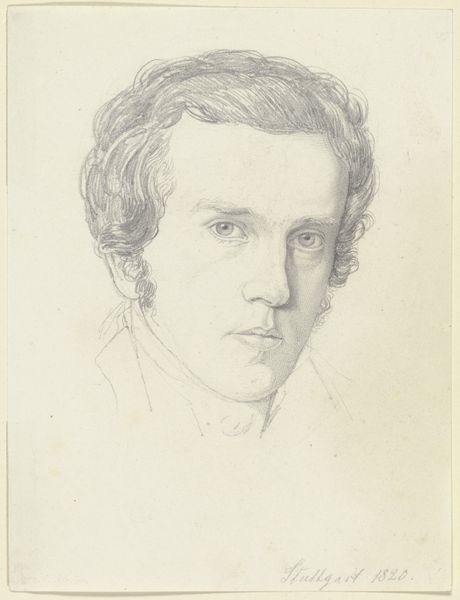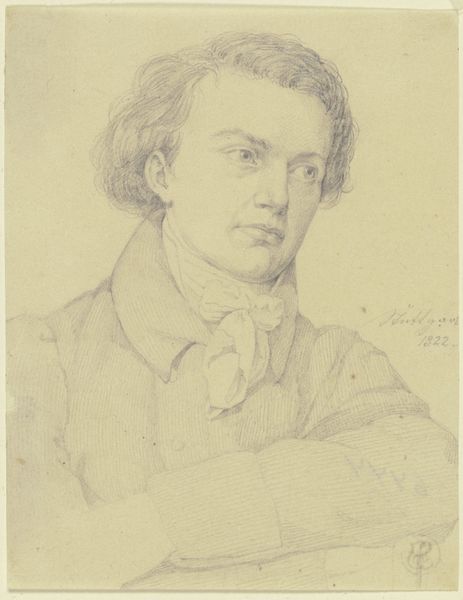
drawing, pencil
#
portrait
#
pencil drawn
#
drawing
#
pencil drawing
#
romanticism
#
pencil
#
portrait drawing
#
realism
Copyright: Public Domain
Curator: This is Nikolaus Hoff's "Bildnis des Augsburger Landschaftsmalers Christoph Rist," created in 1820. Editor: There's an immediacy to it. The stark pencil strokes lend it an unfinished, vulnerable air. It captures something fleeting, almost melancholic. Curator: Hoff's rendering participates in the early 19th century interest in artists representing other artists, celebrating artistic brotherhood as cultural touchstones. This ties into the Romanticism movement, elevating landscape painting and individual artistic genius. Editor: The use of line is exquisite; observe the varying pressure on the pencil, how he achieves subtle gradations in tone to sculpt the face. Light seems to emanate from within, but there is something cold in the portrayal. The form's articulation transcends a mere recording. Curator: Hoff, as a well-traveled and popular portraitist, undoubtedly intended this to cement Rist’s place in the artistic circles of Augsburg. Portraiture like this was a mode of documenting not only the sitter’s appearance but also their social and intellectual standing within artistic communities. Editor: I see your point. But look closer. The slightly averted gaze and that pursed mouth hint at some subtle conflict or guardedness, something personal beyond merely displaying an individual in a portrait of honor. Curator: It could be argued that the realism of the time also embraced portraying an authentic character. The flaws, even, humanized the sitter and broke free of previous formal constraints that created artificial representations of power. Editor: Precisely! It captures more than mere physical likeness; it suggests inner complexity, an individual's soul. What is it about the materiality of pencil that helps expose what is interior? Curator: It also allows us to witness the emerging visual culture in Augsburg, how art scenes promoted themselves during turbulent post-Napoleonic Europe when a new notion of "Germany" started forming. Editor: Absolutely, a simple piece yet loaded with multiple dimensions! I came for the beautiful surface, and learned to see the complex background of what made it appear so beautifully bare.
Comments
No comments
Be the first to comment and join the conversation on the ultimate creative platform.
